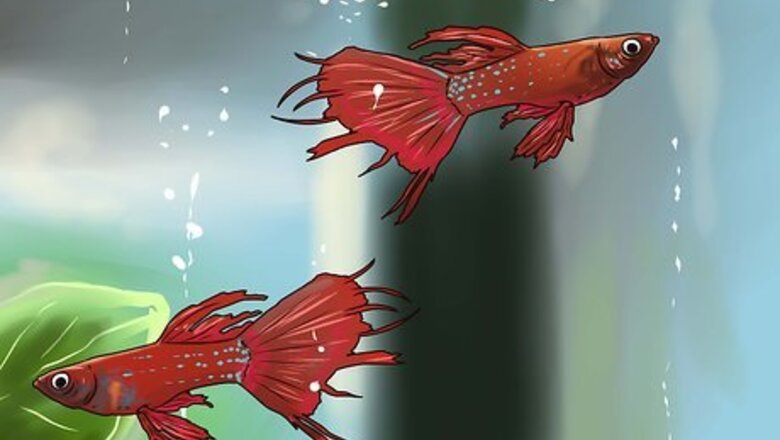
views
X
Research source
Although easily treatable, fin rot is a disease that could make your fish very sick and unable to move if not treated promptly.[2]
X
Research source
Being able to identify what fin rot looks like, along with knowing how to treat it, will help you take better care of your fish.
Identifying Fin Rot
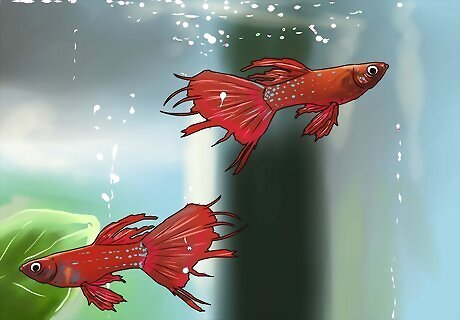
Look at the shape of your fish’s fins. Fin rot usually affects a fish’s tail fin, but can also affect other fins, such as the dorsal and pectoral fins. In the early stages of fin rot, the edge of the fin will look ragged or shredded, due to the breakdown of the fin’s protective membrane. As the disease progresses, an increasing amount of the fin will be destroyed. As more of the fin erodes away, the fin may start to resemble a semicircular bite shape. If fin rot becomes severe, the fin will erode to the point of being only a stump. A hole in the affected fin usually indicates a fungal infection, which sometimes occurs simultaneously with fin rot. Be aware that you may not be able to detect fin rot until the disease is fairly advanced.

Observe the color of your fish’s fins. Fins affected by fin rot become discolored. If your fish has fin rot, the edges of his fins will have an uneven, fuzzy white cotton-like lining—this is a very common sign of fin rot. His fins will also develop red streaks from inflammation and bleeding. The affected areas may also have white dots, which could be indicative of a fungal infection.
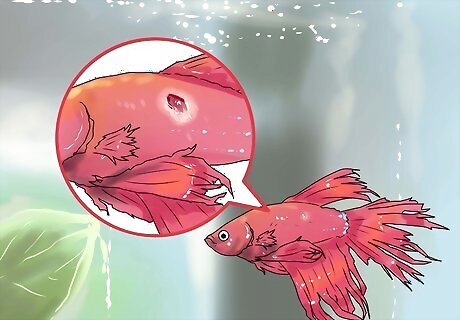
Examine your fish’s entire body. In its most severe stages, fin rot can affect other parts of your fish’s body. For example, your fish may develop abdominal swelling. You may also notice ulcers and lesions on different parts of your fish’s body. Fin rot is a bacterial disease. When the fins become damaged, the bacteria can enter the bloodstream through the damaged area and spread the disease throughout your fish’s body.
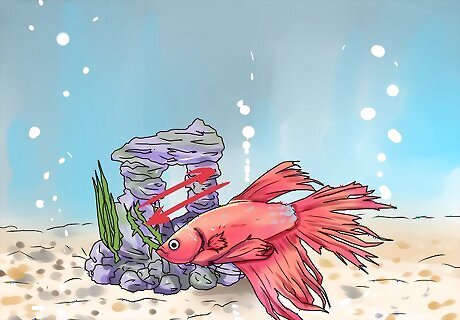
Watch your fish’s behavior. Although the physical appearance of the fins is the easiest way to identify fin rot, your fish’s behavior can also give you important clues. He may become listless. He may also start rubbing against the tank’s walls or on the tank’s decorations to try to relieve his discomfort—this could actually make the disease worse by further damaging his fins. These behaviors are not specific to fin rot, but can help confirm the diagnosis if his fin damage is characteristic of this disease.
Determining the Cause of Fin Rot
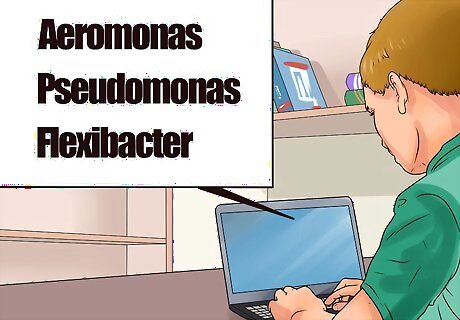
Research bacterial causes of fin rot. Fin rot is caused by opportunistic bacteria (Aeromonas, Pseudomonas, Flexibacter). Opportunistic bacteria are usually harmless, but can cause disease under certain conditions. The opportunistic bacteria are likely already in your fish’s tank, but will not cause disease when your fish is healthy and his tank's water quality is good. Other bacteria linked to fin rot are Pseudomonas species and myxobacteria.
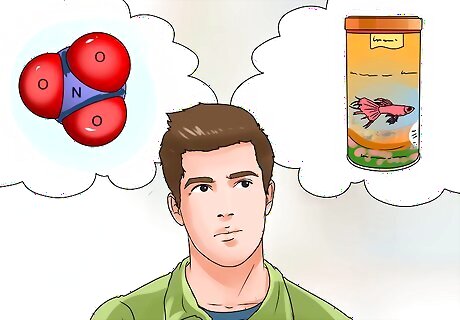
Evaluate the water quality of your fish's tank. Opportunistic bacteria will cause disease in your fish when some underlying condition weakens his body's defenses. Poor water quality is the most common underlying condition with fin rot. For example, ammonia accumulation in your fish's tank can damage his fins, creating an entry point for the bacteria. Nitrate—what ammonia is broken down to during the nitrogen cycle—can also accumulate in the tank and damage your fish's fins. Decaying live plants and leftover food can increase ammonia and nitrate levels.
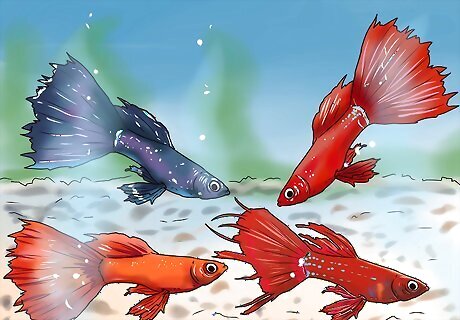
Identify stressors in your fish's life. Stress is another common underlying condition. It weakens your fish’s immune system, which reduces his ability to fight off infection. Your fish can become stressed for a number of reasons, including bullying by other fish, overcrowding, and improper human handling. Water that is too cold, as well as water pH fluctuations, can also be stressful to your fish.
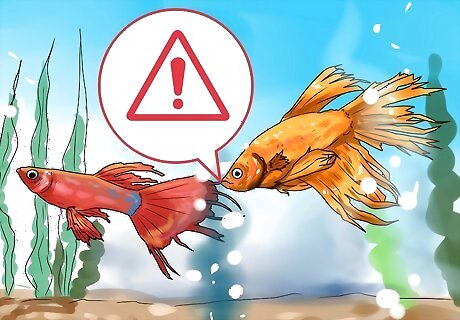
Check your fish for signs of physical damage. Physical damage is another underlying condition of fin rot. Bodily wounds create entry points for opportunistic bacteria to enter your fish's body and case disease. Fighting and fin nipping commonly result in physical damage. If you have a burrowing fish, he could easily damage his tail and fin if the bottom of his tank contains gravel instead of sand.
Treating Fin Rot
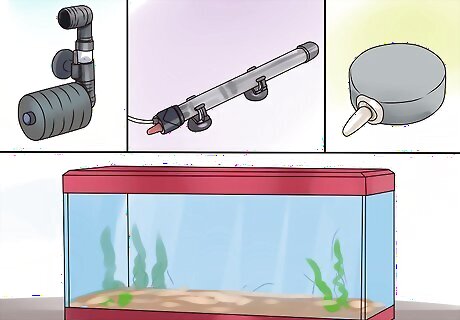
Move your sick fish to a separate tank. This is relevant if you have multiple fish in one tank. Isolating the sick fish will prevent him from transmitting disease to the healthy fish. To prevent possible ammonia and nitrate accumulation, do not put substrate or live plants in the treatment tank. Use a sponge filter in the treatment tank. It is less likely than a chemical filter to filter out medications, and is unlikely to stress your fish (like a strong power filter). Place an enclosed water heater in the tank to maintain a water temperature that is recommended for your specific type of fish. An air stone will help keep the tank well oxygenated. The supplies for your treatment tank are available at your local pet store. Continue to monitor the other fish for signs for fin rot. Separate and treat them if necessary.

Administer antibiotic treatment to your fish. In the United States, over-the-counter antibiotics (e.g., erythromycin, trimethoprim, and sulfadimidine) are used to treat fin rot. The antibiotic is typically added directly to the tank’s water. Carefully follow the medication’s instructions to ensure effective treatment. Outside of the United States, you may have to obtain the antibiotics through your veterinarian. It is common to use a combination of antibiotics to treat fin rot, since the disease could be caused by several types of bacteria. Methylene blue is a non-antibiotic treatment that can also be used to treat fin rot.
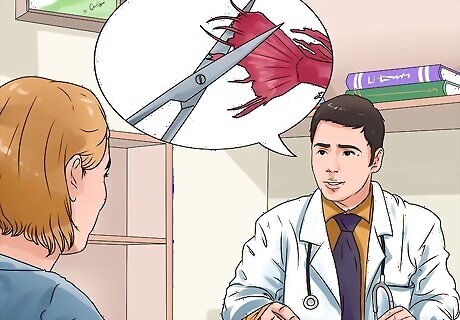
Trim the affected fins. Depending on the severity of fin rot, fin rot can also be treated by trimming the affected fins to remove the damaged tissue. This medical procedure requires that your fish be sedated, so you will need to schedule an appointment with your veterinarian to have this done. Your veterinarian will use sterile scissors to remove the damaged tissue. He or she will then treat the clean edge with antiseptic. Your fish may need additional treatment if fin rot has become extensive. The fin tissue is more likely to grow back with minor cases of fin rot.

Keep your fish isolated. Your fish should remain in the treatment tank until his clinical signs have improved. A good rule of thumb is to keep him isolated for about 10 days. During this time, look for improvement in clinical signs: normal color returning to his fins, healing of ulcers and lesions on his body, normal swimming behavior. Be mindful that the fin rot may be too severe for treatment.
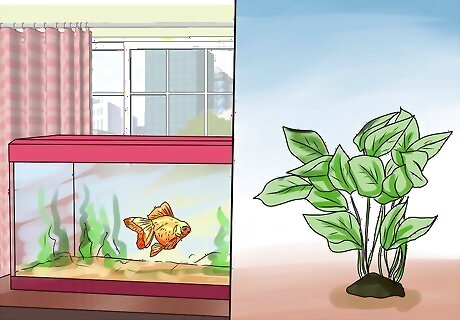
Address the underlying conditions. Effective treatment of fin rot involves both medical treatment and improvement of underlying conditions. Improving water quality is extremely important. Change the water to remove excess ammonia and nitrate from the tank and add fresh minerals to the tank. If need be, change the filter and allow time for bacteria to grow that will help reduce ammonia levels in the tank. Remove any dead plants to reduce ammonia accumulation. Reduce the stress in your fish's life by keeping him in his own tank, away from the other aggressive fish. You could also use a water heater and thermometer to keep his tank at the right temperature. Remove sharp objects from your fish's tank (e.g. gravel, sharp-edged decorations) to prevent further physical damage.

















Comments
0 comment